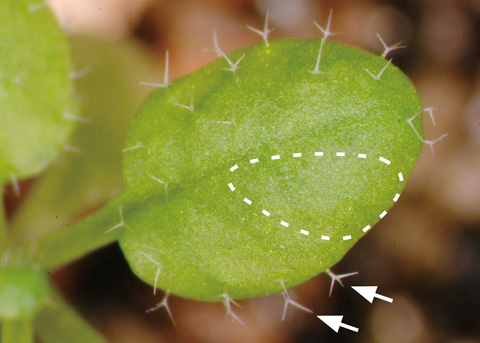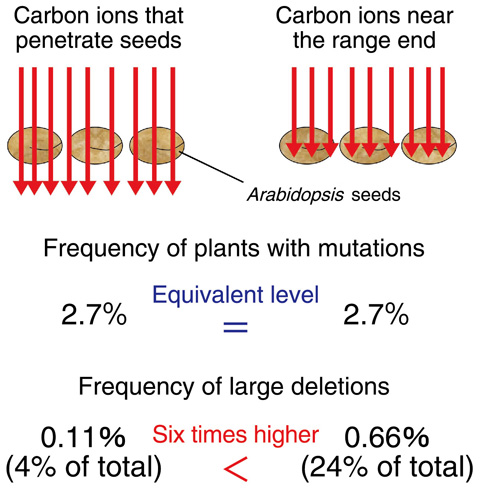
Fig.5-23 Detection of mutations by utilizing trichomes

Fig.5-24 Carbon ions near the range end frequently induce large deletions
Accelerated ion beams have been used as useful mutagens for plant breeding, because they induce mutations different from those induced by γ-rays or chemical mutagens. For plant breeding, ion beams that penetrate seeds or cultured tissue are typically used. While the ion beams deposit most of their energy close to the end of their range, the types of mutations that are induced by ion beams near their range end have not been studied. Thus, we established an experimental method that enables efficient detection of mutations in plants and examined the characteristics of the mutations induced by ion beams near the range end, with an emphasis on large deletions.
Many trichomes (hairs) can be seen on Arabidopsis leaves. The GLABRA1 (GL1) gene is indispensable for trichome development. Arabidopsis plants that have a mutation of the GL1 gene in either one of a pair of chromosomes generate glabrous leaf tissue when the other GL1 gene is mutated (Fig.5-23). This change enables visual detection of the induced mutations and analysis of the characteristics of the mutations induced in the GL1 gene using DNA isolated from the glabrous leaf tissue.
Arabidopsis seeds were irradiated with two types of carbon ion beams: carbon ions that penetrate seeds, and carbon ions near the range end. The frequency of plants with mutated leaf tissue was equivalent for both types of carbon ions at doses that had the same effect on survival reduction. However, the ratio of large deletions among all of the mutations was six times greater for the carbon ions near the range end (Fig.5-24). This result suggests for the first time that ion beams near the range end frequently induce large deletions. Thus, ion beams near the range end are expected to be effective for drastic alteration of DNA to create useful mutations for plant breeding.